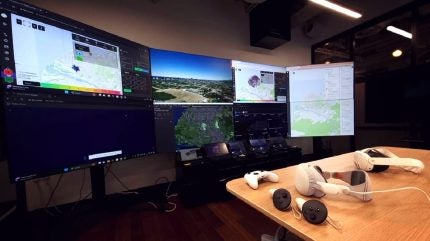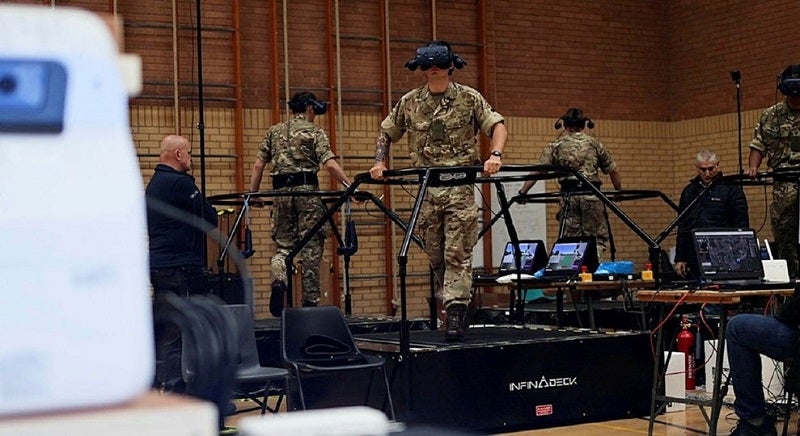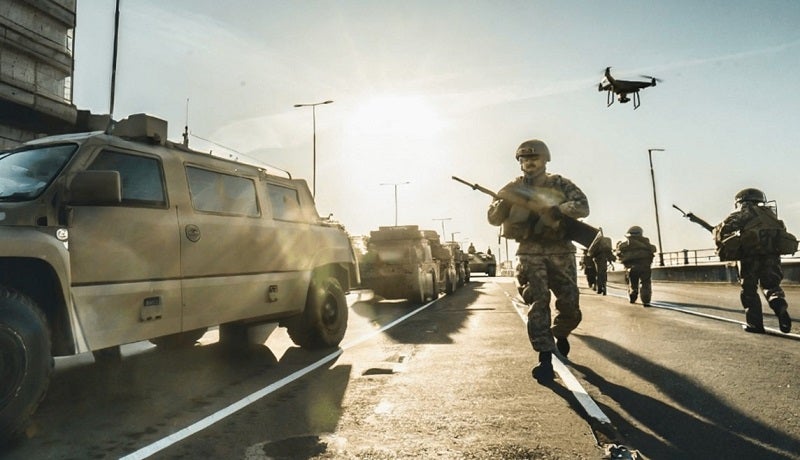
In the last few years, the British Army have undergone efforts to substantially transform how its soldiers are trained.
Through the Army Collective Training System (ACTS), the Army will leverage new and emerging technologies to provide a more immersive synthetic alternative to live training. The Ministry of Defence (MoD) announced the scheme back in September 2021 when it allocated £950m ($1.18bn) toward this end over the next decade.

Discover B2B Marketing That Performs
Combine business intelligence and editorial excellence to reach engaged professionals across 36 leading media platforms.
Globally, the military simulation and training market, valued at $28.9bn in 2022, is expected to reach $37.2bn by 2032 and cumulatively value $352.7bn over the forecast period, according to GlobalData intelligence. It is worth noting that the market is anticipated to be dominated by the land simulation and training segment, which accounts for more than 80% of the market.
Within this new simulation supplier ecosystem, the Army has contracted start-ups such as the London-based spatial computing provider Hadean to offer various solutions. The company has already delivered a vast cloud-based platform that has successfully overcome the Army’s longstanding siloed training methods.
Now, following news of its recent pitch to the Army offering a credible, complex and representative human terrain simulation – augmented by a unique large language model – Hadean invited Army Technology to review its product in person and to speak to their vice president of innovation, Chris Arthurs.

‘A common picture’
Hadean’s live, virtual and constructive (LVC) training solution brings together different moving parts that provide “a common picture” across numerous hardware devices and different software programmes.

US Tariffs are shifting - will you react or anticipate?
Don’t let policy changes catch you off guard. Stay proactive with real-time data and expert analysis.
By GlobalDataThe company uses databases offered by the US company Snowflake to contextualise data, use game engines like VR Forces by MAK Technologies and Unreal Engine by Epic Games to visualise information and integrate in-service systems like 4C Strategies’ Exonaut. At the heart of the LVC environment there is Hadean’s artificial intelligence (AI)-powered spatial computing tool.
“We’ve increased our screens recently” to “shape the data between all of these systems,” Arthurs said, indicating toward the four screens displaying the simulated image generation and the data driving it all.
A siginificant aspect of Hadean’s integrated ‘system of systems’ is that it is a “hub that can be easily added to.” This will prove to be a significant selling point given the UK MoD’s pledge at the end of February to spirally develop systems used across the Armed Forces. Training will be no exception.
This will be useful in the product’s evolution: “We will be able to keep adding these [different] features as they enter the market, all to build it up to be a much better product” as emerging technologies develop in the future.
‘Break down the world’
When it comes to the digital representation of the terrain Arthurs explained that their operators “break down the world into squares. Each square runs under one resource.” In doing so, Hadean is able to ensure the appropriate “partition of computational power” needed in a given location in their virtual space.
In addition, within an approximate region of the constructed space – determined by a tool known as the “interest management system” – the farther outside the epicentre the less network bandwidth is given to the area. “What you care about is the different frequency of updates” the further afield you go.
Arthurs observed that “the challenge with this is how much legacy systems can keep up with it.”

Hadean’s AI tool
Rapid progress in AI has made it a key battleground technology for countries like the US and China and it is easy to see why in recent years. Public interest in the technology has surged since the release of OpenAI’s ChatGPT in November 2022; however, AI has been a part of countries’ larger military strategies for decades.
This extends to training, for which Hadean offers its own unique large language model (LLM), which the company uses to equip a stream of ‘real-time’ social media intelligence to forces operating in the simulated environment.
In addition, operators managing the simulation case can alter the situation for troops. Arthurs explained that “you specify your command [to the AI tool] in English, it’s processed by the language model and then it configures the situation.”
Of course, there are some challenges with using a LLM as a social media platform. We live in an age where disinformation is itself a method of warfare. Western nations and anti-Russian media outlets have accused Russian operatives of using social media to spread pro-Moscow propaganda and disinformation to undermine their governments.
In May 2023, OpenAI CEO Sam Altman highlighted the risk of LLMs being used for “one-on-one interactive disinformation” and their potential national security impacts. Detection of AI-generated content is an additional burden on security infrastructure and resources which will further offset the balance between disinformation and effective countermeasures.
This is a problem Arthurs acknowledged, and it is something the Hadean team is currently pursuing as the product evolves.





